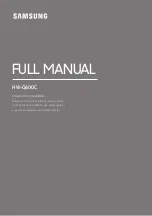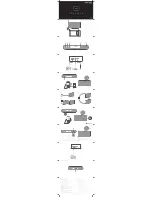
Arcline 8/212 User Guide V1.0
Page 60
Figure A.14: Sunny-day temperature gradient causing typical curved array sound to veer upwards slightly beyond the site
Sound propagation may change after sunset as air near the ground cools whilst the air above it
cools more slowly.
Figure A.15 Temperature gradient on a still night causing sound to veer downwards or travel along the ground beyond the site
Cooler air near the ground after sunset will cause the sound propagation to head towards the
surface causing one of two scenarios. Sound will either be scattered and dispersed at surface
level or, if the surface happens to be cold water, ice, frost or just a significantly colder surface
layer, long-range propagation can occur. Sound gets “trapped” at ground level deprived of
normal dispersion. Sound can often be clearly audible several kilometres away under these
conditions - unless natural or man made barriers afford some attenuation.
11 Appendix A - Line array basics
Summary of Contents for Arcline 212
Page 1: ...Arcline 8 212 User Guide V1 0 ...
Page 71: ......













































